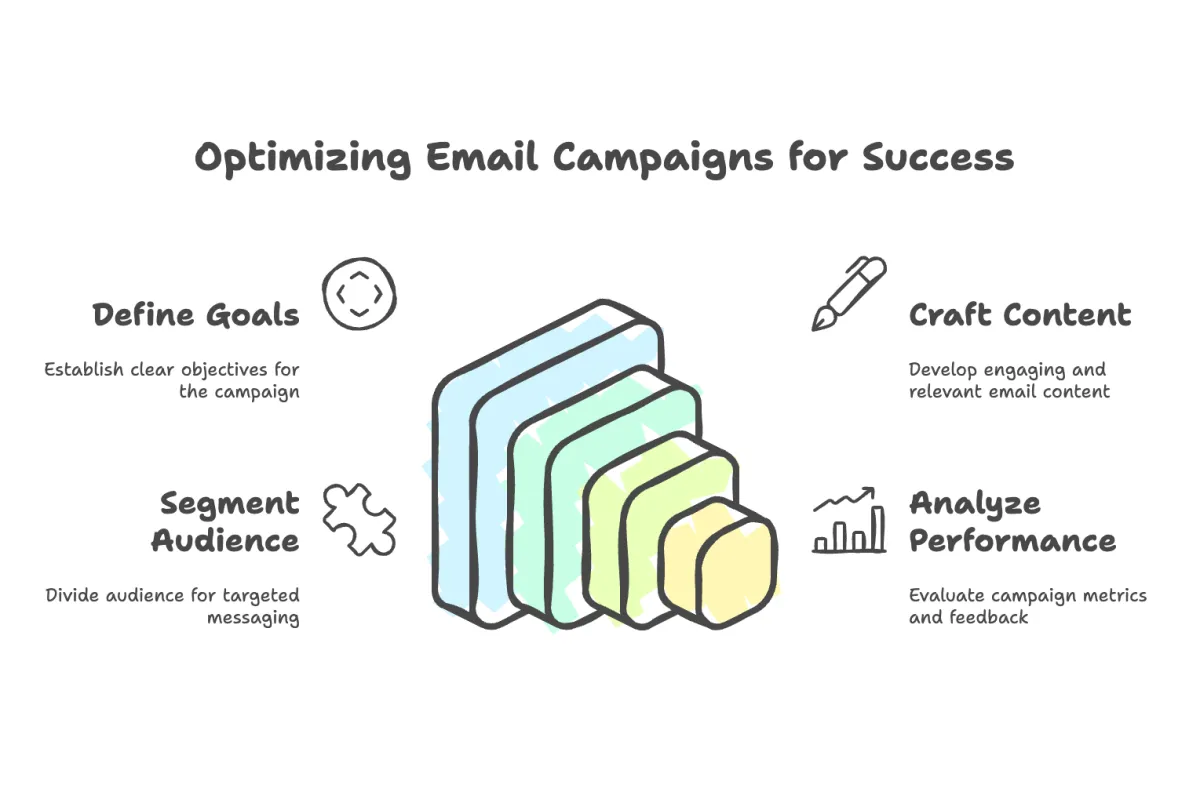
Getting More Leads Through Email Campaigns
Email marketing remains a powerful tool for reaching your audience, offering a direct line to potential and existing customers. Whether you're promoting a new product, sharing updates, or nurturing leads, email campaigns can generate significant engagement when done right. However, crafting effective email campaigns requires more than just sending out a message. It demands careful planning, targeted content, and an understanding of your audience.
Understanding the Basics of Email Campaigns
Before diving into creating your email campaign, it's crucial to grasp the basics that underpin successful strategies. An email campaign is more than just sending a message; it involves planning, strategy, and execution. Start by defining your primary goals. Are you introducing a new product, nurturing existing leads, or boosting brand awareness?
Clear objectives guide the direction of your entire campaign. They help you focus your efforts and measure success. Having a defined goal allows you to tailor your messaging to meet specific outcomes. Equally important is deciding on the type of email campaign. Options include newsletters, promotional emails, or customer retention emails. Each type serves a different purpose and requires a distinct approach.
Once goals are set, ensure you set measurable benchmarks and timelines. Consider metrics like open rates, click-through rates, and conversion rates to track progress. Consistent evaluation of these metrics lets you adjust and refine your strategy. Include a call-to-action (CTA) in each email to prompt recipients to take the desired next step. Effective CTAs are clear and encourage immediate action, whether clicking a link, signing up, or making a purchase.
Crafting Compelling Content for High Engagement
Compelling content is the heart of any successful email campaign. Engaging content encourages recipients to open your emails, read through the content, and take action. Start by understanding your audience. Gather information on their preferences, pain points, and interests to ensure your content resonates with them.
Focus on creating attention-grabbing subject lines. A subject line acts as the gateway to your email, determining whether it will be opened or ignored. Make it concise and intriguing, offering a glimpse of what recipients can expect inside. Avoid using spammy language that might land your message in a junk folder.
When it comes to the body of the email, keep your message clear and focussed. Use simple, straightforward language and break your text into short paragraphs or bullet points for easier reading. Visual elements like images or graphics can also enhance engagement by making the content more appealing.
Ensure that each email contains a strong call-to-action. A well-crafted CTA guides the reader on what to do next and motivates them to follow through, whether it's visiting your website, downloading a resource, or making a purchase. Test different content strategies and formats to see which yields the best engagement. By understanding what works best for your audience, you can continuously refine your content to drive higher engagement levels.
Segmenting Your Audience for Targeted Messaging
Audience segmentation is crucial for personalising email campaigns. By dividing your audience into smaller, more manageable groups, you can tailor messages that resonate better with each segment. This approach leads to higher engagement, as the content feels more relevant to the recipient.
Start with demographic segmentation. Group your audience based on characteristics like age, gender, location, or occupation. This helps in crafting messages that reflect their specific needs and interests. For instance, a younger audience might prefer a more casual tone, while a professional group might respond better to formal language.
Next, consider behavioural segmentation. This involves dividing your audience based on their past interactions with your brand. Identify patterns in their purchasing behaviour, engagement with previous emails, or website visits. Use this information to create targeted campaigns that align with their behaviour.
You can also benefit from psychographic segmentation. This focuses on lifestyle, values, and interests. Tailor your messages to fit their personalities and what they care about most. Understanding what's important to your audience allows you to connect with them on a deeper level.
Analysing Campaign Performance for Continuous Improvement
Measuring and analysing the performance of your email campaigns is essential for continuous improvement. Tracking key metrics allows you to understand what works and what doesn’t, enabling informed decisions for future campaigns.
Begin by defining which metrics matter most to you. Key performance indicators (KPIs) often include open rates, click-through rates, conversion rates, and unsubscribe rates. These metrics provide insight into how well your emails are performing in terms of engagement and effectiveness.
Use A/B testing to compare different aspects of your emails. Test variables like subject lines, content layout, images, or CTAs. Analysing the results helps you learn the preferences of your audience, allowing you to optimise each element for better results.
Review the data regularly and identify patterns or trends. If certain messages consistently have high engagement rates, examine what makes them successful and apply those principles to other campaigns. If you spot areas with low performance, make adjustments based on your findings.
Implement feedback loops with your audience. Encourage them to share what they like or want to see more of in future emails. This helps build a campaign strategy that is continuously refined to meet your audience's needs and increases overall campaign success.
Conclusion
Effective email campaigns require a thoughtful strategy that blends understanding, creativity, and data-driven insights. By focusing on segmentation, you ensure your messages speak directly to each audience group, boosting relevance and engagement. Analysing campaign performance closes the loop, allowing for ongoing improvements and refinements.
Email campaigns are just one part of a comprehensive digital strategy. At Pancake Pixels, we understand the importance of integrating various marketing elements, from SEO to online reputation management, to enhance your overall brand presence. Explore our all-in-one marketing solutions to help your business grow and achieve its fullest potential!
